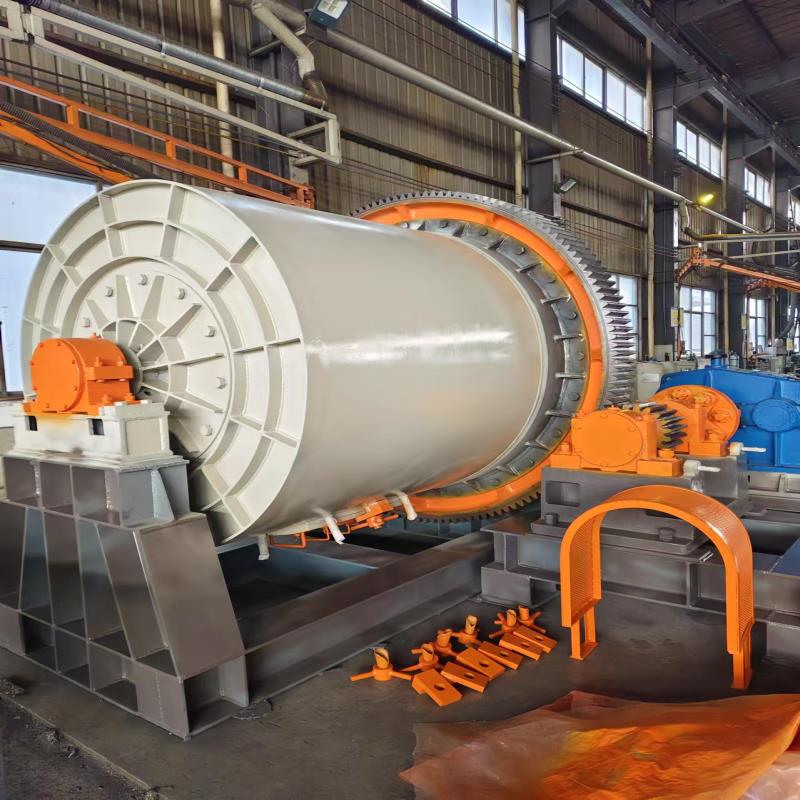- +8618937185591
- +8618937185591
- ec19@zkcorp.com
- +8618937185591


In the grinding stage of industrial production, the ball mill serves as a core piece of equipment, and its performance directly impacts product quality and production efficiency Ceramic ball mills and steel lined ball mills are two types of widely used grinding equipment. They differ significantly in terms of material, working principle, and applicable scenarios. Understanding these differences can help businesses choose the right model according to their needs.
1. Core Material: Determine Performance Differences from the Foundation
(1) Ceramic Ball Mill
The key components of the ceramic ball mill - the lining and grinding media (balls) are both made of high-hardness ceramic materials, commonly aluminum oxide ceramics with Mohs hardness reaching 7-9 levels. Not only do they have excellent wear resistance, but they also have strong chemical stability, preventing chemical reactions with the materials during grinding, ensuring maximum material purity.
(2) Steel Lined Ball Mill
The lining plates of steel-lined ball mills are mostly made of high manganese steel, and the grinding media are steel balls. Steel has excellent toughness and strength, able to withstand the intense impact of large materials. However, during long-term grinding, the surface of the steel will generate trace amounts of metal debris due to friction, which may mix into the material.
2. Working Principle: The Fundamental Difference in Grinding Methods
(1) Ceramic Ball Mill
The ceramic ball mill operates with a motor-driven cylinder rotation, and the ceramic balls and materials are lifted by the ceramic liner. When reaching a certain height, the ceramic balls and materials fall due to gravity. Since the ceramic balls have a low density, the impact force during falling is small. The materials are mainly ground fine through continuous squeezing and grinding actions. It is more suitable for materials that are not very hard and require uniform particle size.
(2) Steel Lined Ball Mill
When the steel liner ball mill cylinder rotates, the steel liner drives the high-density steel balls to rise to a high position. The steel balls, relying on their own weight and inertia, impact the material with great force, achieving the crushing of large and high-hardness materials; simultaneously, the friction between the steel balls, steel liner, and material also aids in grinding. This "Powerful Crushing + Grinding" mode can quickly process materials with high hardness and large chunks.
3. Applicable Fields: Distinctive Contrast of Scene Adaptability
(1) The core position of the ceramic ball mill
Due to its "zero pollution" and "fine grinding" characteristics, ceramic ball mills are mainly used in fields that require extremely high purity and uniformity of particle size for materials.
• Digital industry: grinding of digital ceramic raw materials and high-purity silicon materials for chips to avoid metal impurities affecting component performance;
• Pharmaceutical and food industries: processing of pharmaceutical raw materials, health supplement powders, cocoa powder etc. to ensure product safety and purity;
• Fine Chemicals: Production of Classy pigments and glazes to ensure uniform color and delicate texture.
(2) The main battleground for steel-liner ball mills
With the advantage of "strong Crushing", steel-liner ball mill is more suitable for processing high-hardness and large-sized materials, mainly used in:
• Mining: Coarse grinding and medium grinding of metallic ores (copper ore, iron ore) and non-metallic ores (limestone, quartz ore) to provide qualified particle size ore slurry for the ore dressing line;
• Building materials industry: grinding cement raw materials, glass raw materials, and construction sand and gravel to meet the efficiency demands of large-scale production.
4. Maintenance and Cost: Balancing Long-term and Short-term
(1) Ceramic Ball Mill
• Maintenance characteristics: Ceramic components have good chemical stability, are not easily corroded, and have a long lifespan. However, they are brittle and need to avoid large foreign objects entering the cylinder; maintenance is simple, just regularly check for wear on the liner and ceramic balls.
• Cost performance: The initial investment in equipment is high (ceramic materials are expensive), but it has low energy consumption and low long-term maintenance and consumable costs, suitable for stable production over time.
(2) Steel Lined Ball Mill
• Maintenance characteristics: The steel liner and steel balls wear out quickly and need to be replaced regularly; steel is susceptible to corrosion, shortening its lifespan in humid or chemically active environments, requiring higher maintenance frequency.
• Cost performance: The initial equipment investment is low (steel cost is low), but it consumes high energy. Later on, consumables (steel balls, lining plates) and maintenance fees are high, which might make the long-term total cost exceed expectations.
The difference between ceramic ball mills and steel-lined ball mills lies essentially in the choice between "fineness and purity" and "strength and efficiency." When selecting a product for a company, it is necessary to consider material characteristics (hardness, purity requirements), production scale, and cost budget. If you pursue purity and fineness, prioritize ceramic ball mills; for handling high-hardness large materials and focusing on short-term investment and efficiency, steel-lined ball mills are more suitable. Choosing the right equipment can make the grinding process a powerful tool for increasing production efficiency.